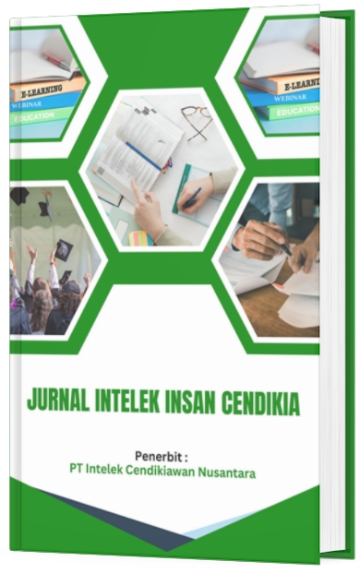PENGENDALIAN SIKLUS PRODUKSI MENGGUNAKAN SISTEM INFOMASI AKUNTANSI
Keywords:
Pengendalian produksi, Sistem Informasi Akuntansi, Efisiensi prosesAbstract
Pengendalian siklus produksi merupakan elemen penting dalam memastikan kelancaran proses operasional suatu perusahaan manufaktur. Sistem Informasi Akuntansi (SIA) memiliki peran strategis dalam mengintegrasikan data dan aktivitas yang terlibat dalam siklus produksi, mulai dari perencanaan hingga evaluasi kinerja. Artikel ini membahas bagaimana penerapan SIA dapat meningkatkan efisiensi, mengurangi kesalahan, dan mendukung pengambilan keputusan yang lebih akurat dalam pengelolaan siklus produksi. Dengan memanfaatkan fitur SIA, perusahaan dapat memantau penggunaan bahan baku, waktu produksi, serta biaya yang dikeluarkan secara real-time. Studi ini menyoroti pentingnya penerapan teknologi informasi dalam mencapai pengendalian yang optimal, sehingga mampu mendukung keberlanjutan dan daya saing perusahaan di pasar.
References
Hall, J. A. (2011). Accounting Information Systems (7th ed.). South-Western Cengage Learning.
Hansen, D. R., & Mowen, M. M. (2015). Cost Management: Accounting and Control (6th ed.). South-Western Cengage Learning.
Horngren, C. T., Datar, S. M., Rajan, M. V., Maguire, W., & Tan, R. (2012). Cost Accounting: A Managerial Emphasis (14th ed.). Pearson Education.
McLeod, R., & Schell, G. P. (2007). Management Information Systems (10th ed.). Pearson Prentice Hall.
Romney, M. B., & Steinbart, P. J. (2018). Accounting Information Systems (14th ed.). Pearson Education.
Gelinas, U. J., & Dull, R. B. (2012). Accounting Information Systems (9th ed.). South-Western Cengage Learning.
Stair, R., & Reynolds, G. (2012). Principles of Information Systems (10th ed.). Course Technology Cengage Learning.
Laudon, K. C., & Laudon, J. P. (2020). Management Information Systems: Managing the Digital Firm (16th ed.). Pearson Education.
O’Brien, J. A., & Marakas, G. M. (2011). Introduction to Information Systems (15th ed.). McGraw-Hill.
Bocij, P., Greasley, A., & Hickie, S. (2015). Business Information Systems: Technology, Development and Management (5th ed.). Pearson Education.
Bagranoff, N. A., Simkin, M. G., & Norman, C. S. (2010). Core Concepts of Accounting Information Systems (11th ed.). Wiley.
Wilkinson, J. W., Cerullo, M. J., Raval, V., & Wong-On-Wing, B. (2012). Accounting Information Systems: Essential Concepts and Applications (4th ed.). Wiley.
Turban, E., Volonino, L., & Wood, G. R. (2015). Information Technology for Management:Digital Strategies for Insight, Action, and Sustainable Performance (10th ed.). Wiley.
Bodnar, G. H., & Hopwood, W. S. (2013). Accounting Information Systems (12th ed.). PearsonEducation.
Simons, R. (2000). Performance Measurement and Control Systems for Implementing Strategy. Prentice Hall.
Anthony, R. N., & Govindarajan, V. (2007). Management Control Systems (12th ed.).McGraw-Hill.
Stair, R., & Reynolds, G. (2017). Fundamentals of Information Systems (8th ed.). Cengage Learning.
Heagy, C. D., & Lehmann, C. M. (2005). Accounting Information Systems (3rd ed.). South Western Thomson.
Weber, R. (1999). Information Systems Control and Audit. Pearson Education.
Pearlson, K. E., Saunders, C. S., & Galletta, D. F. (2019). Managing and Using Information Systems: A Strategic Approach (7th ed.). Wiley.
Downloads
Published
Issue
Section
License
Copyright (c) 2024 Karina Insani Tumangger, Rayyan Firdaus

This work is licensed under a Creative Commons Attribution-ShareAlike 4.0 International License.













